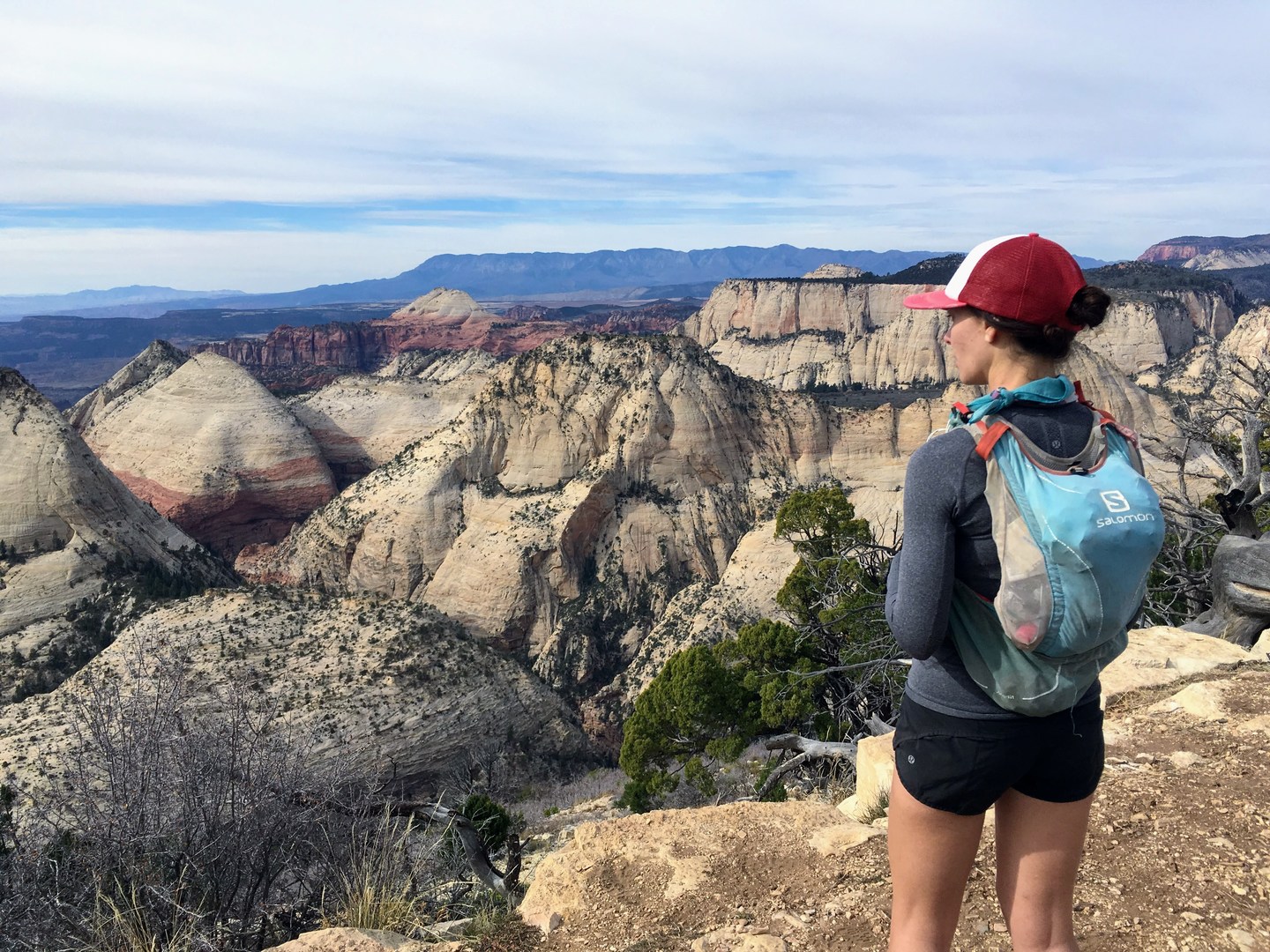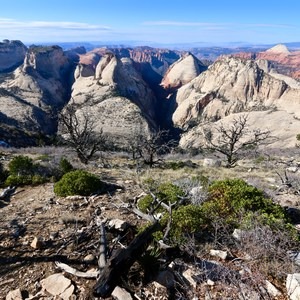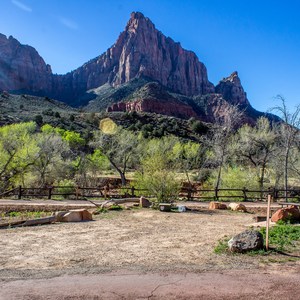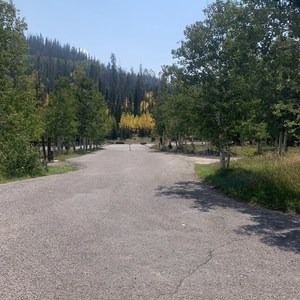The West Rim Trail is a 30.7-mile out-and-back trail in Zion National Park. It begins at Lava Point and makes its way southeast to Zion Canyon, offering scenic views of towering white cliffs and colorful canyons along the way. There are nine different backcountry campsites along the trail, making it an ideal backpacking trip. The West Rim Trail is open to runners, hikers, backpackers, and horseback riders.
For the first 3.5 miles, the trail remains mostly flat as it traverses Horse Pasture Plateau with views of Wildcat Canyon to the west. After dipping in and out of Potato Hollow, the trail reaches a junction with the Telephone Trail. Keep to the left to stay on the West Rim Trail.
The West Rim Trail winds along the rim of the canyon with spectacular views of Phantom Valley, Castle Dome, and several other canyons in the south.
After Cabin Spring, the West Rim Trail descends steeply, losing 2,500 feet of elevation in just over 4 miles to reach the heart of Zion Canyon. The descent ends at the Grotto Picnic Area, which is an excellent place to take a break and take in the incredible canyon scenery before retracing your steps back to Lava Point.
WATER
There are two seasonal springs along the West Rim Trail that may have water flowing.
-
Potato Hollow Spring is located at the bottom of Potato Hollow, near campsites #7 and #8 along the West Rim Trail. The spring is usually dry in the summer and is not considered a reliable source of water.
-
Sawmill Springs is actually a seep from the ground that produces some pools in the area near campsite #9. By early to mid summer, it is usually dry. It is not a reliable source of water.
A more comprehensive list of water sources is available online through the national park service.
WHEN TO VISIT
Spring, summer, and fall are the best times to hike this trail. In winter, the trail is typically covered in snow, which may persist until early spring.
CAMPING AND PERMITS
Zion National Park requires a permit for overnight backpacking. Information can be found through the NPS- Backpacking Reservation Guide.
Camping is allowed only at designated sites along the West Rim Trail.
-
Campsite #1 - First-come, first-serve, walk-in basis (backcountry permit still required).
-
Campsite #2 - Available through the online reservation system.
-
Campsite #3 - First-come, first-serve, walk-in basis (backcountry permit still required).
-
Campsite #4 - Available through the online reservation system.
-
Campsite #5 - First-come, first-serve, walk-in basis (backcountry permit still required).
-
Campsite #6 - Available through the online reservation system.
-
Campsite #7 - First-come, first-serve, walk-in basis (backcountry permit still required).
-
Campsite #8 - Available through the online reservation system.
-
Campsite #9 - First-come, first-serve, walk-in basis (backcountry permit still required).
CONSIDERATIONS
-
Be prepared for quickly changing weather in the park.
-
Check updated water reports and make sure to bring enough water and food with you.
-
In the summer, temperatures can exceed 100 degrees in the lower elevations.
LAVA POINT TRAILHEAD
The Lava Point Trailhead is located off Kolob Terrace Road and has parking, picnic tables, and a campground (campground is usually open from May to September).
ADDITIONAL INFORMATION
Zion Information Guide
NPS - West Rim Trail
Lava Point Campground



































Comments
Sign In and share them.